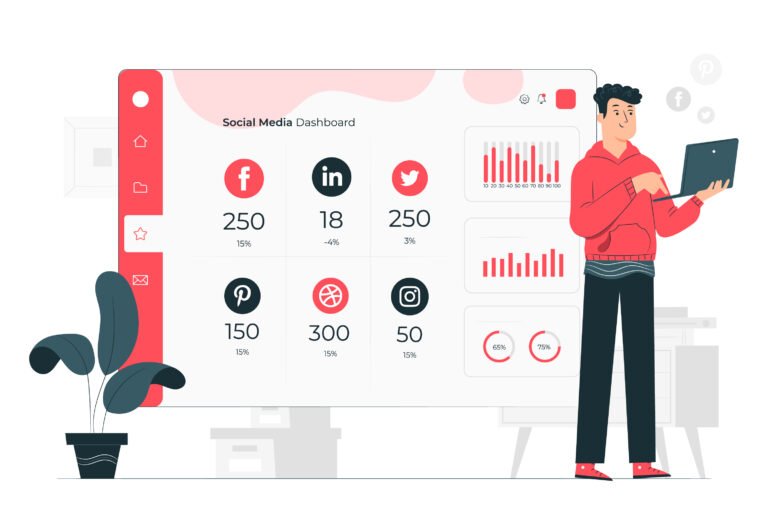1.Why Authentic Social Engagement Matters Online
The Shift from Vanity Metrics to Real Connections
In the early days of social media, success was often measured by how many likes, followers, or views a profile could rack up. These vanity metrics gave a quick dopamine boost, but they rarely translated into meaningful interactions or long-term brand loyalty. Today, digital audiences are more discerning. They crave genuine connections with brands, creators, and communities that reflect real values and offer authentic interaction.
Rather than chasing numbers, businesses and influencers alike are now focusing on quality over quantity. A smaller, highly engaged audience is far more valuable than a large, passive one. Real conversations, shared experiences, and emotional connections are what drive brand growth in the long run.

Understanding the Modern Digital Audience
Today’s online users—especially Gen Z and millennials—are incredibly adept at spotting inauthentic content. They gravitate toward brands and creators that are transparent, relatable, and interactive. They don’t just want to consume content—they want to be a part of the conversation.
Modern audiences expect brands to be socially aware, responsive, and human. They value honesty, inclusivity, and purpose over polished perfection. This shift means that brands must adapt by listening more than broadcasting and engaging in ways that feel real, not rehearsed.
2. What Is Authentic Social Engagement?
Defining Authenticity in the Digital Space
Authentic social engagement goes beyond simply responding to comments or posting regularly. It’s about genuine interaction, showing the real human side of your brand, and building trust through honesty, consistency, and value-driven content. Authenticity means being true to your brand’s voice, values, and mission—even when it’s not trendy or easy.
Instead of using scripted replies or automated messages, authentic engagement involves meaningful conversations, acknowledging feedback, and showing appreciation to your community. It’s not about selling—it’s about connecting.
Common Misconceptions About Social Engagement
Many brands confuse social engagement with activity. Posting frequently doesn’t necessarily mean you’re engaging authentically. Likewise, buying followers or using bots to boost likes may create the illusion of popularity, but it damages credibility in the long run.
Another misconception is that authenticity means oversharing or being unfiltered. While transparency is important, authenticity is about intentional honesty—sharing what’s meaningful and relevant to your audience, not just what’s personal or spontaneous.
Authentic social engagement is not a tactic—it’s a long-term commitment to being real, responsive, and respectful in every interaction.
3. Benefits of Authentic Engagement for Your Brand
Building Trust and Loyalty
Trust is the foundation of any lasting relationship—especially online. When your audience feels that you’re being genuine, they’re more likely to trust your message and support your brand. Authentic engagement shows that you value your community, not just their wallets.
This trust leads to brand loyalty. People who feel connected to your brand are more likely to become repeat customers, brand advocates, and enthusiastic referrers. They’ll stick with you not just because of your products or services, but because of the relationship you’ve built.
Driving Sustainable Growth
While viral trends might offer a temporary spike in traffic, authentic engagement leads to steady and sustainable growth. By focusing on real conversations and consistent interaction, you’re nurturing a community that will support your brand long-term.
Engaged audiences are more likely to interact with your content, recommend your brand, and contribute to its visibility through shares and mentions. This kind of organic growth is more enduring than any paid ad campaign.
Improving Reach Through Word-of-Mouth and Shares
People trust recommendations from friends and peers far more than traditional advertising. When your audience feels heard, appreciated, and connected, they’re more likely to share your content and talk about your brand—online and offline.
Authentic engagement transforms your audience into brand ambassadors who voluntarily spread your message because it resonates with them, not because they were paid to do it.
4. Strategies to Cultivate Genuine Online Engagement
Know Your Audience: The Foundation of Authenticity
Before you can engage authentically, you need to understand who you’re talking to. What are their interests, pain points, values, and behaviors? Use analytics, polls, and direct conversations to gather insights about your audience.
Once you understand them, tailor your tone, content, and interactions to reflect what matters most to them. Speak their language, respect their perspective, and show that you’re listening.
Crafting Relatable and Valuable Content
Authenticity starts with content that feels real and relevant. Share stories, experiences, behind-the-scenes moments, and educational tips that your audience can relate to. Avoid overly polished or sales-heavy posts.
Aim to create content that sparks conversations, addresses genuine problems, and adds value to your audience’s life. The more useful and relatable your content is, the more likely it will inspire meaningful interaction.
Encourage Conversations, Not Just Reactions
Don’t settle for likes and emojis. Invite your audience to share their thoughts, ask questions, and contribute to the conversation. Use open-ended questions, opinion polls, and live Q&As to create two-way communication.
When people engage with your content, respond thoughtfully—not with generic replies, but with comments that acknowledge their input and further the dialogue.
Be Consistent Yet Human in Your Brand Voice
Consistency builds recognition, but humanity builds connection. Develop a consistent tone of voice that aligns with your brand values, but don’t be afraid to show emotion, humor, or vulnerability where appropriate.
Whether you’re responding to praise or criticism, be empathetic and authentic. Let your audience see that there’s a real person—or team—behind the brand.
5. Tools and Platforms That Foster Authentic Connections
Social Media Platforms Best for Engagement
Different platforms support different styles of engagement. Choosing the right one depends on your brand and audience:
- Instagram: Great for visual storytelling, interactive Stories, and personal engagement through DMs and comments.
- Facebook: Ideal for community-building with Groups and long-form content in posts.
- X (formerly Twitter): Best for real-time conversations, threads, and responding to current events.
- LinkedIn: A professional space where authenticity is shown through insights, thought leadership, and personal career journeys.
- TikTok: Known for casual, unfiltered, and entertaining content that thrives on personality and relatability.
Choose platforms where your target audience is most active, and focus on depth of interaction over breadth of reach.
Analytics Tools to Measure Meaningful Interactions
To assess how well you’re engaging authentically, focus on quality metrics rather than just numbers. Helpful tools include:
- Sprout Social: Offers detailed engagement reports and helps track replies, mentions, and sentiment.
- Hootsuite: Enables scheduling and monitoring across platforms, with insight into audience interactions.
- Instagram and Facebook Insights: Built-in analytics that show comments, shares, saves, and story interactions—signals of authentic engagement.
- Google Analytics: Tracks time spent on site, bounce rate, and referral traffic from social—indicators of genuine interest.
Community Management Tools That Prioritize Personal Touch
Managing social engagement at scale can be challenging, but the right tools can help maintain authenticity:
- ManyChat or Chatfuel: Chatbots with human handoff options to keep conversations going smoothly.
- Zendesk or Intercom: Great for responding to questions and feedback while keeping tone personalized.
- Discord or Slack (for communities): Ideal for building close-knit communities and having real-time, direct conversations.
Use automation to support your efforts, not replace them. The goal is to maintain a balance between efficiency and human presence.
6. Case Studies: Brands Winning with Authentic Engagement
Small Businesses with Big Online Communities
Glossier, a beauty brand that began as a blog, built its community by listening to customers and involving them in product development. They regularly feature user-generated content, respond to comments, and share authentic behind-the-scenes moments. This approach has created a loyal, grassroots community that feels personally invested in the brand.
Another example is Beardbrand, a grooming company that uses YouTube and Instagram not just to promote products, but to share lifestyle content, grooming advice, and honest conversations. Their commitment to helping their audience feel confident and understood has driven deep engagement and long-term growth.
Lessons from Influencers Who Keep It Real
Influencers like Tabitha Brown have shown how far authenticity can go. Her warm, relatable content and consistent kindness earned her a massive following—not because she followed trends, but because she stayed true to her voice and message. Her audience trusts her, which translates into strong engagement and brand collaborations rooted in shared values.
Similarly, Jay Shetty connects through storytelling, vulnerability, and life lessons that resonate deeply with his followers. By focusing on value-first content, he’s built a community that not only consumes his content but actively interacts with it, shares it, and spreads his message.
7. Common Pitfalls to Avoid
Over-Automation and Losing the Human Touch
Automation tools can save time, but overusing them can backfire. Generic auto-replies, scheduled posts without context, and bots that handle engagement can make your brand feel cold or robotic.
Your audience wants to know there’s a real person behind your content. Strive for balance—use automation to streamline tasks, but make space for personalized, real-time interactions that show you care.
Chasing Trends Without Aligning to Your Brand Values
It’s tempting to jump on every new trend or viral hashtag, but doing so without a clear connection to your brand can feel inauthentic or opportunistic. Audiences can tell when you’re posting something just for attention.
Before joining a trend, ask:
- Does this align with our message and values?
- Will this resonate with our audience in a meaningful way?
If not, it’s better to sit it out and stay true to your brand identity.
Ignoring Feedback or Negative Comments
No brand is perfect—and that’s okay. What matters is how you handle criticism and feedback. Ignoring, deleting, or responding defensively to negative comments can erode trust quickly.
Instead, acknowledge concerns, apologize if necessary, and show you’re committed to learning and improving. This transparency demonstrates integrity, and it often turns critics into loyal supporters.
8. How to Turn Engagement Into Long-Term Growth
Building Communities, Not Just Followings
One of the most powerful ways to transform social engagement into growth is by focusing on community over audience. A following observes—you post, they watch. A community participates—you post, they respond, share, and even create content alongside you.
Create spaces where your audience can connect with each other, not just with you. Facebook Groups, Discord servers, and comment threads are great for fostering ongoing discussions. When people feel like they belong, they’re far more likely to stay invested and invite others in.
Leveraging User-Generated Content
Encourage your audience to share their experiences, stories, and creativity related to your brand. Whether it’s a customer photo, testimonial, or product review, user-generated content (UGC) boosts credibility and deepens engagement.
Highlighting your community not only provides free, authentic promotion—it also shows that you value and appreciate your followers. This strengthens the relationship and increases loyalty over time.
Creating Loyalty Through Two-Way Communication
Social Engagement shouldn’t end with a like or a reply. Follow up. Ask for feedback, involve your audience in decision-making (e.g., polls or product naming), and reward loyalty with shoutouts, giveaways, or early access to new offerings.
People remember how you make them feel. By consistently showing that you care about your community, you create a lasting emotional connection that leads to repeat business, referrals, and brand advocacy.
9. Conclusion: The Future of Online Presence Is Human
As digital platforms evolve, one truth remains constant: people crave connection. In a world saturated with content, ads, and automation, it’s authenticity that stands out. It’s the human element—the thoughtful reply, the relatable story, the genuine appreciation—that builds real relationships.
Growing your online presence isn’t just about gaining followers or going viral. It’s about being consistent, present, and intentionally human in every interaction. When you lead with authenticity, you create a space where people feel seen, heard, and valued—and that’s where real growth begins.
So whether you’re a brand, business owner, or content creator, remember this: authentic social engagement isn’t just a strategy—it’s a mindset. Embrace it, and watch your community—and your presence—grow in the most meaningful way possible.
Read Also: Engagement Metrics That Supercharge Social Media Success




